✨ The Ultimate Chatgpt GPT-5 Guide for Beginners: Unlock Powerful AI Without the Stress 🚀
GPT-5 for beginners is more than just a buzzword — it’s a gateway to discovering how artificial intelligence can make your daily life easier, more creative, and incredibly productive. Whether you’re curious about using AI to learn faster, brainstorm fresh ideas, or simply save time on repetitive tasks, this GPT-5 guide will show you practical ways to get started without feeling overwhelmed.
In this article, you’ll explore how to use GPT-5 step by step, discover beginner-friendly tools, and learn actionable tips to unlock the full potential of this powerful technology. By the end, you’ll have a clear roadmap for turning GPT-5 into your personal assistant for study, work, and even creative projects.
📑 Table of Contents
- 🤖 Introduction: Why GPT-5 Is a Big Deal
- 🧠 What Makes GPT-5 Different from Previous Models
- 💡 Everyday Ways Beginners Can Use GPT-5
- 📚 Learning Faster and Smarter with GPT-5
- 💼 Boosting Productivity for Work and Business
- 🎨 Unlocking Creativity: From Stories to Startups
- 🌍 Global Impact: How GPT-5 Shapes the World Around Us
- ⚠️ Challenges and What Beginners Should Watch Out For
- 🔧 Practical Tips for Using GPT-5 Effectively
- 🛠️ Tools, Platforms, and Resources to Explore
- 🎯 Future Trends: What’s Next After GPT-5
- 🙋 FAQs: Questions About Chatgpt GPT-5 for Beginners Answered
- ✅ Key Lessons & Takeaways
🤖 Why GPT-5 Is a Big Deal
Artificial intelligence has gone from being a futuristic idea in movies to something many of us use daily without even noticing. From asking Siri for directions to letting Netflix suggest your next series, AI quietly shapes how we live and work. But with GPT-5, something different is happening. This isn’t just another step forward — it’s a leap that makes AI more practical, approachable, and useful for beginners than ever before.
So why is GPT-5 such a big deal? It’s because this version of AI feels less like a complicated machine and more like a partner you can talk to, learn from, and create with. For the first time, everyday users — not just programmers or researchers — can unlock powerful features that feel almost magical.
A Shift from Techy to Friendly
Older AI tools often felt intimidating. You needed technical skills or special knowledge to get real value out of them. With GPT-5, the focus is on making AI user-friendly for everyone. Whether you’re a student trying to learn faster, a small business owner juggling too many tasks, or someone just curious about new technology, GPT-5 adapts to you.
Think of it as the difference between using a traditional instruction manual versus chatting with a patient mentor. With GPT-5, you don’t need to know how the engine works — you just need to know what you want, and the AI helps you get there.
Not Just Smarter — More Practical
It’s tempting to think of GPT-5 as just “smarter” than previous models. While that’s true, the bigger story is practicality. GPT-5 can follow conversations more naturally, generate ideas that fit your exact needs, and even connect with the apps and tools you already use.
For beginners, that practicality matters more than raw computing power. You don’t care about billions of parameters; you care about whether GPT-5 can help you draft an email, study for an exam, or brainstorm a business idea in minutes. And the good news? It can.
The Timing Is Perfect
Another reason GPT-5 is a big deal: the world is ready for it. Remote work, online learning, and digital businesses are more common than ever. People are searching for ways to save time, learn faster, and stay creative in an increasingly digital world. GPT-5 arrives as a timely assistant, offering tools that directly address these needs.
Instead of being a futuristic luxury, GPT-5 feels like a necessity. Just as smartphones became essential for communication, GPT-5 is quickly becoming essential for productivity and creativity.
Beginner Takeaway
Here’s what you should remember: GPT-5 isn’t just “more advanced AI.” It’s an opportunity for beginners to learn faster, create more, and stress less without needing a tech background. By the end of this guide, you’ll see not only why GPT-5 matters, but also how to start using it in your everyday life.
And before diving into practical uses, let’s first understand what makes GPT-5 stand apart from its earlier versions.
🧠 What Makes GPT-5 Different from Previous Models
When new technology comes out, it’s natural to wonder: “Is this really different, or just a fancier name?” The truth is, GPT-5 is not just a small upgrade. It’s built on years of progress and addresses many of the limitations that frustrated users of GPT-3 and GPT-4. Let’s break down the biggest differences in a way that’s easy to grasp.
1. Smarter Conversations That Stay on Track
One of the most common complaints with older AI models was how easily they lost context. You might start a chat about your business plan, ask a follow-up about marketing, and suddenly the AI would act like it forgot everything you said before.
With GPT-5, conversations feel more natural and continuous. The model remembers more of what you’ve said and can weave those details into later answers. For beginners, this means less frustration and more meaningful back-and-forth dialogue.
👉 Beginner tip: If you’re planning a project, keep the conversation going instead of starting fresh each time. GPT-5 will “remember” details better and give you more relevant suggestions.
2. More Accurate and Reliable Responses
AI has always had a weakness: making things up. GPT-3 and GPT-4 often gave answers that sounded convincing but weren’t always correct. GPT-5 is trained with better data and improved methods, making its answers far more accurate.
Of course, no AI is perfect. Beginners should still double-check important facts. But compared to older versions, GPT-5 reduces the risk of being led astray by a “confident-sounding” mistake.
👉 Beginner tip: Use GPT-5 as a starting point, not the final word. For example, if it suggests research ideas, use them as a base and then confirm them through trusted sources.
3. Multi-Modal Superpowers
Here’s where things get exciting: GPT-5 isn’t limited to text. It can analyze and generate across multiple modes — text, images, and even charts or diagrams. That means you can upload a photo, a screenshot of a spreadsheet, or a diagram, and GPT-5 can actually make sense of it.
For beginners, this opens a world of possibilities. You can ask GPT-5 to:
- Summarize the key points of a slide deck.
- Explain a confusing chart from your class.
- Suggest design improvements based on an image.
👉 Beginner tip: Don’t just stick to text prompts. Experiment by uploading visuals — you’ll discover new ways GPT-5 can help you understand and create.
4. Better Efficiency and Speed
Older models sometimes felt sluggish, especially when handling complex prompts. GPT-5 has been optimized to deliver faster, smoother responses, even when tackling big questions or long conversations.
This may sound minor, but in practice it makes a huge difference. Beginners who might only have a few minutes to study or plan something will appreciate that GPT-5 delivers results quickly.
👉 Beginner tip: Use GPT-5 during “micro-moments” — like while commuting or during a coffee break. Its speed makes it perfect for quick learning sessions or brainstorming on the go.
5. More Personalization and Adaptability
Perhaps the most valuable improvement for beginners is GPT-5’s ability to adapt to your style. Whether you prefer detailed explanations or quick summaries, GPT-5 adjusts based on your prompts and feedback.
If you’re learning a new subject, you can ask it to explain things like you’re a complete beginner — or, as you progress, ask for deeper and more technical insights.
👉 Beginner tip: Be clear about your level. Try prompts like “Explain this to me like I’m new to the topic” or “Summarize this in three bullet points.” The more you guide GPT-5, the better it adapts.
6. Integration with Everyday Tools
Finally, GPT-5 is designed to work with the apps you already use. From note-taking tools like Notion to automation platforms like Zapier, GPT-5 can plug into your workflow.
This makes AI feel less like a separate tool and more like a built-in helper. Beginners don’t need to switch platforms or learn new software — GPT-5 fits into your existing habits.
👉 Beginner tip: Start by connecting GPT-5 with one tool you already use daily, such as your note app or calendar. That small step can save you hours without overwhelming you.
So, what makes GPT-5 such a big deal? In short: it’s not just smarter, it’s friendlier, faster, and more useful for beginners than any AI before it. With its ability to hold conversations, analyze visuals, and adapt to your style, GPT-5 feels less like a machine and more like a partner.
Now that you understand what sets GPT-5 apart, the next question is: how can you actually put it to work in your daily life? In the following section, we’ll explore practical, beginner-friendly ways to use GPT-5 every day — from study sessions to side hustles.
💡 Everyday Ways Beginners Can Use GPT-5 for Beginners
GPT-5 is powerful, but its magic really shows when you use it in small, everyday moments. For beginners, the easiest way to start is to plug it into situations you already face daily — planning, communicating, learning, or making decisions.
1. Organize Your Life With Less Effort
Planning often eats up more time than the tasks themselves. GPT-5 can step in as your lightweight planner.
- Meal prep: Tell it what’s in your fridge, and it can suggest a three-day menu with a shopping list.
- Fitness: Ask for a weekly workout you can do in 20 minutes a day, no gym required.
- Study-work balance: Share your schedule, and GPT-5 can carve out blocks for studying, part-time work, and breaks.
Even letting GPT-5 draft tomorrow’s to-do list can reduce decision fatigue and give you a head start.
2. Communicate Without the Blank-Screen Struggle
We’ve all been there: staring at an empty email draft, not sure how to sound professional without being stiff. GPT-5 can give you a polished starting point.
- Emails: Draft a polite request for time off or a clear project update.
- Texts: Write a thoughtful decline to an invitation without sounding rude.
- Social posts: Generate a catchy caption for Instagram or a polished LinkedIn update.
What makes this useful is not that GPT-5 writes for you — but that it gets you past the hardest part, so you can refine it in your own voice.
3. Add Creativity to Your Hobbies
Creativity isn’t just for artists. Anyone with a hobby or side idea can use GPT-5 as a spark.
- Cooking: Feed it a list of random ingredients, and it will invent recipe options.
- Writing: Ask for story prompts, poem starters, or lyrics for a song idea.
- Photography: Get unique shoot themes, like “urban symmetry” or “shadows at sunset.”
- Business ideas: Brainstorm names, slogans, or even customer personas for a side hustle.
Instead of replacing your creativity, GPT-5 acts like a friend throwing ideas at you until something clicks.
4. Turn Curiosity Into Mini-Lessons
You don’t have to schedule hours to learn something new. GPT-5 makes micro-learning easy.
- Jargon check: “Explain machine learning like I’m 12.”
- Quick comparisons: “What’s the difference between Python and JavaScript?”
- Current events: “Summarize today’s news about renewable energy in 5 sentences.”
These bite-sized explanations turn everyday curiosity into knowledge you actually keep.
5. Make Small Decisions Easier
Decision fatigue is real. GPT-5 can’t decide your life, but it can help you weigh options.
- Products: “Compare Laptop A and Laptop B for battery life and portability.”
- Lifestyle: “List pros and cons of studying abroad vs. staying home.”
- Everyday choices: “Give me three dinner options with chicken, fast to cook.”
By laying out pros and cons clearly, it makes your final decision less overwhelming.
📚 Learning Faster and Smarter with GPT-5 Guide
If everyday tasks make GPT-5 feel handy, learning is where it feels transformative. Think of it as a study buddy who’s patient, available 24/7, and adapts to your level of understanding.
1. Simplify Complex Topics
Dense subjects can be discouraging. GPT-5 can break them into digestible layers.
Examples of prompts:
- “Explain supply and demand in three sentences.”
- “Now show me a real-world example about gas prices.”
- “Summarize this 10-page article into 5 bullet points.”
By adjusting the detail level, you can build understanding step by step instead of drowning in information.
2. Practice Actively Instead of Reading Passively
Reading notes isn’t enough to learn. GPT-5 makes practice interactive.
- Quizzes: Paste in your study material and ask it to generate five practice questions.
- Languages: Role-play as a café waiter while you practice ordering in Spanish.
- Writing: Paste in your essay draft and get feedback on clarity and flow.
This active back-and-forth turns studying into an experience rather than a chore, helping information stick.
3. Build Your Own Learning Path
Instead of wandering between random tutorials, GPT-5 can create a clear roadmap.
For graphic design:
- Start with Canva to learn layouts.
- Study basic design principles like color theory and typography.
- Move on to advanced tools such as Photoshop or Illustrator.
For coding:
- Begin with Python basics.
- Practice small projects GPT-5 suggests (like a calculator app).
- Progress to frameworks and larger applications.
This step-by-step direction saves hours of confusion about where to start.
4. Support Traditional Studying
Students can get relief from overwhelming workloads by using GPT-5 for:
- Summarizing chapters into key takeaways.
- Rewriting dense notes into plain English.
- Drafting essay outlines and refining thesis statements.
- Showing math solutions step by step, not just giving the final answer.
Used this way, GPT-5 doesn’t replace learning — it makes the material approachable.
5. Learn Life Skills Beyond School
Some of the most valuable lessons aren’t taught in classrooms. GPT-5 can help with:
- Personal finance: Basics of budgeting, saving, and credit scores.
- Career growth: Mock interviews, practice for presentations, or resume polish.
- Health knowledge: Simple explanations of nutrition, fitness, or healthy habits.
For example, you can ask: “Create a five-day crash course on budgeting for beginners.” GPT-5 will break the topic into manageable lessons you can apply immediately.
Everyday tasks become lighter, and learning becomes faster when you let GPT-5 step in. Instead of wrestling with confusion or wasting hours on planning, you gain clarity and momentum. For beginners, the secret is to treat GPT-5 not as a shortcut but as a partner that helps you think, practice, and improve.
Next, we’ll look at how GPT-5 doesn’t just help with personal growth — it can also be a powerful tool to boost productivity at work and even unlock new levels of creativity.
💼 Boosting Productivity for Work and Business
GPT-5 isn’t just for personal use — it can also become a valuable partner in your professional life. Whether you’re a student entering the workforce, a freelancer managing clients, or a small business owner juggling tasks, GPT-5 can save you time and sharpen your focus.
1. Drafting Documents and Reports
Writing long documents can be exhausting. GPT-5 can:
- Create first drafts of reports, proposals, or presentations.
- Turn bullet points into polished paragraphs.
- Summarize lengthy resources into digestible briefs.
For example, if you have research notes for a marketing plan, GPT-5 can turn them into a structured draft in minutes. You still refine it, but the hardest part — starting — is handled.
2. Managing Emails and Communication
Inbox overload is a productivity killer. GPT-5 helps by:
- Writing quick replies for routine questions.
- Sorting information into clear summaries.
- Improving tone for sensitive conversations.
Instead of spending hours buried in emails, you can skim GPT-5’s drafts, adjust them in your style, and send them off. That means less time writing and more time focusing on work that matters.
3. Enhancing Meetings and Collaboration
Meetings often generate too many notes and too little clarity. GPT-5 can:
- Convert raw notes into organized summaries.
- Highlight action items with deadlines.
- Rephrase discussions into clear minutes for teammates.
This makes it easier to keep projects moving without wasting time chasing information.
4. Planning and Project Management
If you’re managing multiple tasks or a team, GPT-5 can act like a planning assistant.
- Break down big goals into step-by-step action items.
- Suggest timelines based on workload.
- Identify bottlenecks before they become problems.
Imagine you’re launching a small online store. GPT-5 can outline tasks like sourcing products, setting up a website, creating a marketing plan, and scheduling social media posts. It doesn’t just tell you “what to do” — it helps you see the sequence clearly.
5. Support for Entrepreneurs and Small Businesses
Running a business is demanding. GPT-5 offers support in areas where time and resources are limited:
- Generate business ideas or test the feasibility of concepts.
- Draft customer service templates.
- Create marketing content tailored to different platforms.
- Simulate customer personas to test messaging.
This is especially useful for solo entrepreneurs who don’t have a big team. GPT-5 can fill gaps without breaking your budget.
🎨 Unlocking Creativity: From Stories to Startups
Creativity often feels like a mysterious spark, but GPT-5 makes it more accessible. Instead of waiting for inspiration, you can actively collaborate with the AI to develop new ideas, polish them, and bring them closer to reality.
1. Writing and Storytelling
Many people dream of writing but get stuck at the first page. GPT-5 can:
- Suggest plot ideas or help with character development.
- Rewrite awkward sentences into smooth prose.
- Generate dialogue samples to get you started.
You can treat it as a co-writer: let it draft a rough scene, then refine it with your personal touch.
2. Content Creation for Beginners
If you create online content — blogs, videos, podcasts — GPT-5 is a powerful brainstorming partner.
- Draft outlines for articles or videos.
- Generate topic ideas aligned with trending keywords.
- Suggest engaging hooks to grab attention.
For example, if you want to start a YouTube channel about travel, GPT-5 can help brainstorm video titles, scripts, and even descriptions optimized for SEO.
3. Fueling Visual and Artistic Ideas
Even though GPT-5 is primarily text-based, its creativity extends into visual projects when paired with design tools.
- Suggest logo concepts for a brand.
- Brainstorm color palettes for a website.
- Describe art concepts you can then create using platforms like Canva or AI art tools.
This is especially helpful if you’re not a designer but want strong creative direction.
4. From Side Hustles to Startups
GPT-5 can be a quiet partner in exploring new business opportunities. For aspiring entrepreneurs, it can:
- Brainstorm business ideas based on your skills and interests.
- Draft pitch outlines or investor decks.
- Simulate customer feedback to refine your offer.
- Suggest marketing campaigns with sample posts and email sequences.
It doesn’t replace real-world testing, but it speeds up the brainstorming stage and gives you a clearer starting point.
5. Overcoming Creative Blocks
One of GPT-5’s most underrated strengths is helping you push past mental blocks. Stuck on a headline? Ask GPT-5 for ten variations. Out of ideas for a photo project? Request unusual themes. Feeling unmotivated? Let GPT-5 suggest small creative exercises.
Sometimes the biggest barrier is simply starting, and GPT-5 gives you that push.
Whether you’re trying to streamline work tasks or explore creative ideas, GPT-5 can act like both a personal assistant and a creative partner. Beginners don’t need advanced skills — just curiosity and a willingness to experiment.
In the next section, we’ll zoom out to look at GPT-5’s global impact: how it’s shaping industries, cultures, and even the way we think about work and creativity worldwide.
🌍 Global Impact: How GPT-5 Shapes the World Around Us
GPT-5 isn’t just changing how individuals study or plan their days. Its influence is spreading across industries, education, and even culture. For beginners, it’s helpful to understand the bigger picture because these global shifts eventually trickle down into personal opportunities.
1. Shaping the Future of Work
- Automation of routine tasks: Companies now use GPT-5 to draft contracts, summarize meetings, or manage customer service chats. This frees people to focus on higher-level thinking.
- Remote collaboration: GPT-5 breaks language barriers by translating conversations in real time, making international teamwork smoother.
- New job roles: Demand is growing for “prompt engineers” and AI trainers — roles that didn’t exist a few years ago.
What this means for beginners: you don’t need to fear losing relevance. Instead, you can learn how to work with AI to boost your own value.
2. Education Without Borders
GPT-5 is making learning more accessible worldwide.
- Students in areas with limited resources can access tutoring through GPT-5.
- Lifelong learners can explore new skills without expensive courses.
- Teachers use GPT-5 to create lesson plans, quizzes, and simplified explanations.
This global reach means knowledge isn’t limited by geography anymore. Beginners can tap into the same AI tools that leading universities and organizations use.
3. Healthcare and Research
Healthcare is also being reshaped by GPT-5:
- Doctors use it to summarize patient histories.
- Researchers analyze massive data sets faster.
- Patients receive clearer, more human-friendly explanations of medical terms.
For everyday people, this translates into faster access to information and more understandable guidance about health decisions.
4. Creativity and Media
GPT-5 is influencing music, film, writing, and art:
- Scriptwriters brainstorm with it.
- Journalists use it to generate summaries.
- Small creators build content faster with AI support.
This democratizes creativity — you don’t need a big studio budget to produce something meaningful. Anyone with an idea and access to GPT-5 can start creating.
5. Global Risks and Responsibility
Of course, worldwide impact isn’t only positive. There are concerns about:
- Misinformation: GPT-5 can produce convincing but false content if used irresponsibly.
- Job displacement: Routine roles may shrink faster than new roles appear.
- Bias: AI reflects the data it’s trained on, which may carry cultural or social biases.
Recognizing these issues helps beginners understand the importance of responsible use.
⚠️ Challenges and What Beginners Should Watch Out For
While GPT-5 opens exciting doors, it also comes with pitfalls. Knowing them early helps you avoid mistakes and build a healthier relationship with AI.
1. Over-Reliance on AI
It’s tempting to let GPT-5 do all the work. But relying too heavily can weaken your critical thinking. For example:
- Using it to write essays without understanding the material.
- Copying answers blindly without verifying them.
- Depending on it for every small decision.
The smarter approach is to treat GPT-5 as a helper, not a replacement for your own judgment.
2. Accuracy and “Hallucinations”
Even with improvements, GPT-5 can still get things wrong. Beginners should be cautious with:
- Facts: Always double-check important information.
- Numbers: Verify calculations or statistics through trusted sources.
- Sensitive topics: Health, legal, or financial advice should always be confirmed with professionals.
Think of GPT-5 as giving you a draft answer — useful, but not final until you validate it.
3. Privacy and Data Safety
When using GPT-5, it’s important not to overshare. Avoid entering:
- Personal details (addresses, ID numbers).
- Confidential work information.
- Sensitive financial or medical data.
AI tools are powerful, but keeping your information safe should come first.
4. Managing Expectations
Beginners often expect GPT-5 to be perfect, but it isn’t magic.
- It may misinterpret vague prompts.
- It can produce answers that feel generic if you don’t guide it clearly.
- It sometimes struggles with highly specialized knowledge.
Patience and practice matter. The better you get at asking questions, the better GPT-5 becomes as a partner.
5. Ethical Considerations
Beginners should also be aware of the bigger ethical questions:
- Should GPT-5 be used to generate school assignments?
- How do we make sure AI-generated content is transparent?
- What happens if people use GPT-5 for harmful purposes?
By reflecting on these questions, you not only use GPT-5 more responsibly but also prepare yourself for the conversations shaping its future.
Understanding the global impact and challenges of GPT-5 helps you see the technology for what it is: a tool with incredible potential and real limitations. Beginners who stay mindful of both sides will be able to benefit without falling into common traps.
Up next, we’ll explore practical tips and resources to help you use GPT-5 more effectively, ensuring that you build skills and confidence while avoiding the pitfalls.
🔧 Practical Tips for Using GPT-5 Effectively
Knowing what GPT-5 can do is one thing — learning how to use it well is another. Beginners often start with simple prompts like “write me an essay” or “explain this topic,” but quickly realize results vary depending on how you ask. Using GPT-5 effectively is about giving it the right context, setting clear expectations, and treating it as a collaborator instead of a magic answer machine.
Here are practical strategies to get the most value out of GPT-5.
1. Be Clear and Specific in Your Prompts
GPT-5 works best when it knows exactly what you want. Vague instructions often lead to generic answers.
- Instead of: “Tell me about marketing.”
- Try: “Explain three low-cost marketing strategies for a beginner running a handmade jewelry business.”
Adding context (who you are, what you need, what format you prefer) helps GPT-5 tailor its response.
2. Use Step-by-Step Instructions
Breaking tasks into steps improves accuracy. Think of it like giving directions to a friend.
- Ask: “First, outline the key points of this article. Then, summarize them in a paragraph for LinkedIn.”
- Or: “List the main steps to create a podcast, and after that, suggest tools I can use for each step.”
By structuring your request, you reduce the chance of GPT-5 going off track.
3. Experiment With Different Formats
Don’t just settle for paragraphs of text. GPT-5 can present information in different forms:
- Lists: “Summarize this in 5 bullet points.”
- Tables: “Compare iPhone 14 and Samsung Galaxy in a table of features.”
- Scripts: “Write a dialogue between a teacher and student explaining photosynthesis.”
Changing the format can make the information easier to understand and apply.
4. Refine and Iterate
The first answer isn’t always the best — and that’s okay. GPT-5 improves when you treat it like a conversation.
- If the reply is too broad, ask: “Can you make it more detailed with real-world examples?”
- If it’s too technical, say: “Explain that in simpler language, like I’m new to the subject.”
- If it’s too long, request: “Summarize this in three sentences.”
Iterating helps you zero in on what you need without starting over.
5. Give GPT-5 a Role to Play
You’ll often get better results by assigning GPT-5 a persona or role.
Examples:
- “You are a career coach. Suggest questions I should practice before a job interview.”
- “Pretend you’re a personal trainer. Create a 4-week beginner workout plan.”
- “You’re an English tutor. Help me practice small talk for travel.”
This framing gives GPT-5 direction and helps it generate responses that feel more relevant.
6. Combine GPT-5 With Other Tools
GPT-5 becomes even more powerful when paired with apps you already use.
- Productivity: Use it alongside Notion to organize notes and tasks.
- Automation: Connect with Zapier to automate email drafts or social posts.
- Design: Take content GPT-5 writes and turn it into visuals with Canva.
This turns GPT-5 from a standalone chatbot into a true assistant across your workflow.
7. Practice “Prompt Stacking”
Sometimes one question isn’t enough. You can build prompts layer by layer.
For example:
- Ask GPT-5: “Give me 10 blog ideas about personal finance for beginners.”
- Pick one and follow up: “Outline this blog post into sections.”
- Then ask: “Draft the introduction in a friendly, conversational tone.”
Each step improves the output, and you stay in control of the direction.
8. Learn by Teaching GPT-5
Paradoxically, one of the best ways to learn is to “teach” GPT-5. Try explaining something in your own words, then ask GPT-5 to:
- Correct mistakes.
- Simplify your explanation.
- Add missing details.
This active process deepens your understanding and shows you gaps in your knowledge.
9. Manage Length and Tone
If responses feel overwhelming, you can guide GPT-5 with word count and style.
- “Explain in under 200 words.”
- “Summarize as bullet points for quick reading.”
- “Write in a casual, friendly style, not too formal.”
Beginners often overlook this, but it makes outputs far more useful in daily life.
10. Keep a Prompt Library
Once you discover prompts that work well, save them. Over time, you’ll build a personal “prompt library” you can reuse and adapt.
Examples to save:
- Daily planner prompts.
- Templates for emails or social posts.
- Learning prompts (e.g., “Explain this as if I’m 12”).
This habit saves time and ensures consistency.
Using GPT-5 effectively isn’t about memorizing complicated tricks — it’s about treating it like a partner. The more context you provide, the clearer your instructions, and the more you refine its answers, the better your results will be.
By practicing these habits, beginners quickly move from “just trying GPT-5” to actually making it a dependable tool for learning, productivity, and creativity.
Next, we’ll explore the best tools, platforms, and resources that connect with GPT-5, so you know where to get started and how to grow beyond the basics.
🛠️ Tools, Platforms, and Resources to Explore
GPT-5 is powerful on its own, but its real potential shines when you connect it with tools and platforms that make it easier to use in daily life. Beginners often ask, “Where should I start?” The good news is, you don’t need advanced setups. With the right resources, GPT-5 becomes part of your existing routine.
Here’s a guide to the most helpful tools and platforms to explore.
1. Direct Access Platforms
If you want to use GPT-5 right away, the simplest way is through platforms that host it directly.
- ChatGPT by OpenAI: The main gateway for most people. It offers GPT-5 in a clean, chat-style interface that works on desktop and mobile.
- Mobile apps: Both iOS and Android apps allow you to use GPT-5 on the go. Perfect for quick questions or brainstorming while commuting.
- Desktop integration: Some operating systems and browsers are beginning to integrate GPT-5 directly, so you can call it up without leaving your workflow.
For beginners, starting here is best because you get the “pure” GPT-5 experience without distractions.
2. Productivity and Note-Taking Tools
Pairing GPT-5 with your favorite productivity apps saves time.
- Notion: Great for turning GPT-5 outputs into organized notes, task lists, and databases. You can even connect GPT-5 directly to write meeting notes or brainstorm ideas.
- Evernote: Similar to Notion but focused on note-taking. GPT-5 can help you structure and polish your notes here.
- Google Docs: Easy for drafting and collaborating. You can paste GPT-5 text directly, then refine with teammates.
Using GPT-5 alongside these tools feels like having a second brain that helps you capture and organize ideas instantly.
3. Automation Platforms
Automation lets you link GPT-5 with multiple apps so tasks happen automatically.
- Zapier: Connect GPT-5 with email, spreadsheets, calendars, and social media. Example: when you receive a client email, GPT-5 drafts a reply automatically.
- IFTTT: Similar to Zapier, focused on simple workflows like posting GPT-5-generated content directly to Twitter or Slack.
- Custom scripts: If you’re curious about coding, GPT-5 can even help you write the automation scripts themselves.
For beginners, start with Zapier because it offers step-by-step integrations without requiring code.
4. Design and Creativity Tools
GPT-5 isn’t visual, but pairing it with design tools brings its ideas to life.
- Canva: Perfect for turning GPT-5-generated text (like social captions or ad copy) into professional designs.
- AI art tools: Platforms like DALL·E or MidJourney generate images that match GPT-5’s descriptions.
- Mind-mapping apps: Combine GPT-5’s brainstormed ideas with visual maps in Miro or MindMeister.
This mix helps beginners go from “idea in text” to “finished creative project” quickly.
5. Learning and Skill-Building Platforms
If your goal is learning, GPT-5 pairs well with educational resources.
- Khan Academy: Use GPT-5 to explain lessons in your own words after watching a video.
- Coursera and Udemy: Ask GPT-5 to summarize course material or generate practice questions.
- Language apps: Pair GPT-5 with Duolingo or Memrise to practice conversations more interactively.
Here’s a simple combo: study a lesson in Duolingo, then ask GPT-5 to role-play a conversation using the words you just learned.
6. Business and Work Platforms
For professionals and small businesses, GPT-5 integrates smoothly with common tools.
- Slack: Generate quick meeting summaries or draft responses to team discussions.
- Trello or Asana: Use GPT-5 to break down projects into task lists.
- Customer support tools: GPT-5 drafts responses for FAQs in Zendesk or Intercom.
Even if you’re just starting a side hustle, these integrations can make you look more professional and organized.
7. Community and Resource Hubs
Learning from others can speed up your progress. There are growing communities around GPT-5 where beginners share prompts, ideas, and tools.
- Reddit communities: Subreddits like r/ChatGPT and r/Artificial offer real-world tips.
- Discord groups: Many GPT-focused servers allow live discussions and resource sharing.
- Prompt libraries: Websites where people share their best GPT prompts, which you can copy and tweak.
These spaces are great for staying inspired and avoiding the feeling that you’re “figuring it out alone.”
8. Keeping Up With Updates
AI tools evolve fast, so staying current is part of the journey.
- Follow OpenAI’s blog for official updates.
- Subscribe to AI-focused newsletters (like Import AI or The Rundown).
- Watch YouTube tutorials where creators test new GPT-5 features and share hacks.
A few minutes each week of staying updated ensures you don’t miss useful improvements.
9. Building Confidence Through Small Experiments
For beginners, the best way to explore tools is to start small.
Examples:
- Use GPT-5 with Google Docs to draft a one-page essay.
- Try Canva to design a poster with text generated by GPT-5.
- Connect GPT-5 and Zapier to automate a single repetitive task, like sending a weekly summary email.
These experiments build confidence and help you discover where GPT-5 fits naturally into your routine.
Exploring GPT-5 doesn’t require advanced tech skills or expensive setups. By pairing it with platforms you already know — whether for notes, design, automation, or learning — you unlock its full potential. Beginners who start small, experiment often, and lean on communities for support will quickly turn GPT-5 into a reliable companion across many areas of life.
Next, we’ll turn to the future: how GPT-5 and similar tools are shaping what’s next for AI, and what that means for you as a beginner entering this new era.
🎯 Future Trends: What’s Next After GPT-5
GPT-5 feels like a big leap, but AI development isn’t slowing down. Beginners often ask, “If GPT-5 is already so advanced, what could possibly come next?” The reality is that AI is still in its early stages. Here are some trends shaping the next wave.
1. More Personalized AI
Future models will likely adapt even more closely to individual users. Imagine GPT-6 remembering your past preferences, writing style, or favorite ways of learning. Instead of adjusting prompts each time, the AI could automatically know how you like information presented.
For beginners, this means less time experimenting and more time getting results that feel tailor-made.
2. Smarter Integration With Daily Tools
Right now, you connect GPT-5 manually with apps like Notion, Slack, or Canva. The next phase will likely see AI built directly into tools you already use. For example:
- Word processors that generate drafts as you type.
- Spreadsheets that analyze and visualize data instantly.
- Email apps that auto-suggest full responses in your tone.
This will make AI feel less like a separate tool and more like an invisible assistant woven into daily life.
3. Multi-Modal Mastery
GPT-5 is already multi-modal — it can process text, images, and even charts. Future models will push this further. Imagine uploading a short video and having the AI summarize key points, or combining audio, visuals, and text into one interactive learning session.
For beginners, this opens new doors: studying becomes more engaging, creativity becomes multi-sensory, and communication across formats becomes effortless.
4. Ethical and Regulatory Frameworks
As AI spreads globally, governments and organizations are working on rules to guide its safe use. Expect more focus on:
- Transparency: labeling AI-generated content.
- Privacy: protecting user data.
- Fairness: reducing bias in AI outputs.
Beginners will benefit from clearer standards, ensuring they can use AI confidently without worrying about hidden risks.
5. The Rise of Collaborative AI
Instead of one AI doing everything, we may soon see ecosystems of specialized AIs — one for coding, one for teaching, one for creativity — working together. This team-like approach could make problem-solving faster and more precise.
For a beginner, that could mean having not just one “assistant,” but an entire panel of advisors tailored to different needs.
🙋 FAQs: Questions About ChatGPT GPT-5 for Beginners Answered
Beginners often share similar concerns when starting with GPT-5. Let’s clear up some of the most common questions.
Q1. Do I need to know coding to use GPT-5?
No. GPT-5 is designed to be accessible to everyone. You type instructions in plain language, and it responds. Coding knowledge only matters if you want to build custom integrations or advanced automations.
Q2. Is GPT-5 free to use?
It depends. Some platforms (like the free version of ChatGPT) may not always offer the newest model. Access to GPT-5 often comes through paid plans, which also unlock extra features like faster speed or multi-modal support.
Q3. Can GPT-5 make mistakes?
Yes. GPT-5 is smarter than older versions but not perfect. It can sometimes give wrong information or overly generic answers. Always double-check important facts, especially in areas like health, finance, or legal advice.
Q4. Will GPT-5 take my job?
AI may automate some tasks, but it also creates opportunities. The key is learning how to use it as a collaborator. People who embrace GPT-5 often find they can do more in less time, making them more valuable in their roles.
Q5. How do I get better results from GPT-5?
The trick is in the prompts. Be specific, provide context, and don’t be afraid to ask follow-up questions. Think of GPT-5 as a conversation partner — the clearer you are, the better the response.
Q6. Is my data safe with GPT-5?
As a rule, don’t share sensitive personal or financial details. Platforms hosting GPT-5 often have privacy policies, but protecting your own information should always come first.
Q7. What’s the best way for a beginner to start?
Pick one area of your life where you feel stuck or want to save time. It could be writing emails, studying for a class, or planning meals. Start using GPT-5 there. Once you’re comfortable, expand into other areas.
✅ Key Lessons & Takeaways
Let’s recap the most important insights from this guide.
- Start simple: Pick one everyday use case, like planning or writing, to test GPT-5.
- Be specific: Clear prompts lead to better results — include context, tone, and format.
- Iterate often: Don’t settle for the first answer. Ask GPT-5 to refine, shorten, or expand.
- Use it as a partner: Treat GPT-5 as a collaborator, not a replacement for your own judgment.
- Stay mindful: Double-check facts, protect personal data, and use GPT-5 responsibly.
- Think ahead: Learning to use GPT-5 today prepares you for future AI tools that will become even more powerful and integrated.
GPT-5 is more than a piece of technology — it’s a doorway into a new way of learning, working, and creating. For beginners, the key is to start small, explore regularly, and treat GPT-5 as a tool to enhance your abilities rather than replace them.
The future of AI will only grow bigger and more integrated into daily life. By getting comfortable with GPT-5 now, you’re not just keeping up with the trend — you’re setting yourself up to thrive in a world where AI is becoming a natural part of everything we do.

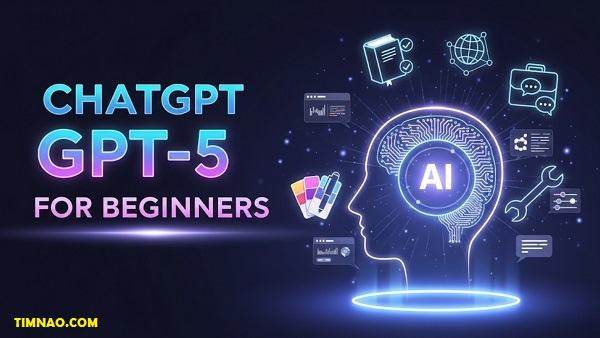


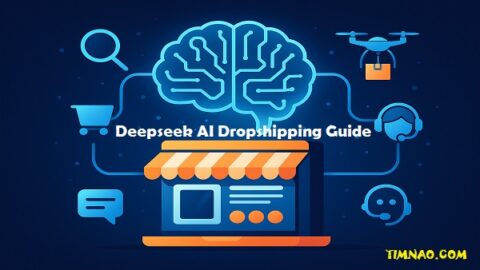
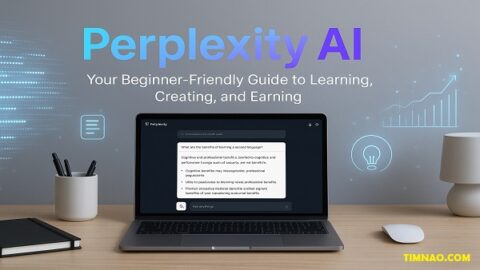
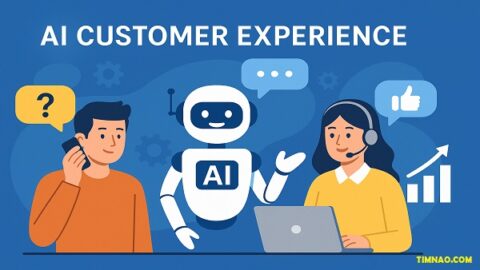


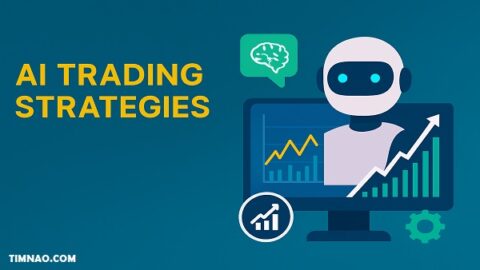
Your blog is a breath of fresh air in the often stagnant world of online content. Your thoughtful analysis and insightful commentary never fail to leave a lasting impression. Thank you for sharing your wisdom with us.